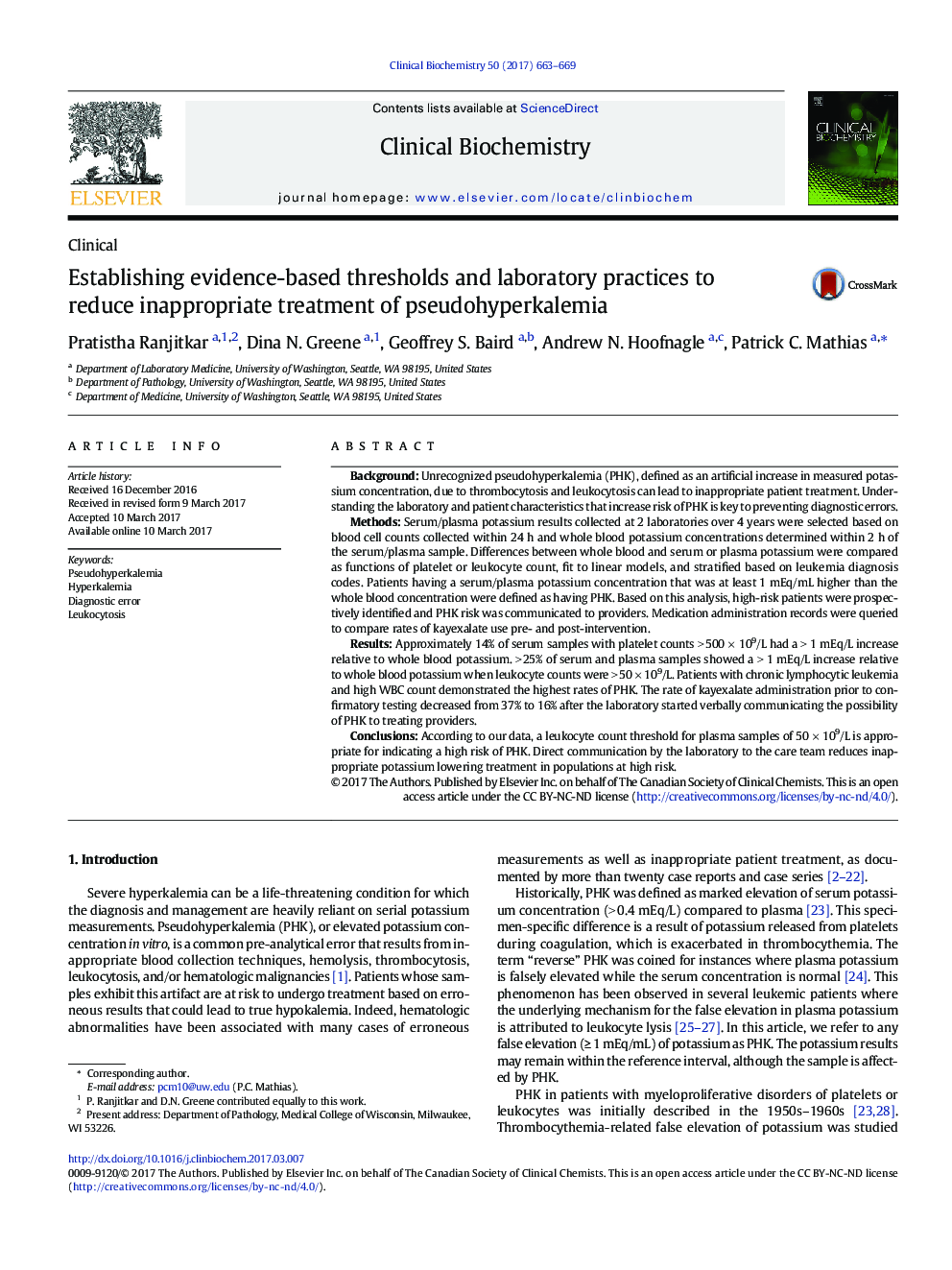| Article ID | Journal | Published Year | Pages | File Type |
|---|---|---|---|---|
| 5509988 | Clinical Biochemistry | 2017 | 7 Pages |
â¢The impact of leukocytosis on pseudohyperkalemia was characterized using comparisons of independent potassium measurement techniquesâ¢We determined that a white blood cell count of â¥Â 50 Ã 109 cells/L has a significant impact on plasma potassium samplesâ¢The association of high white blood cell count with falsely elevated plasma potassium was highest in patients with chronic lymphocytic leukemia
BackgroundUnrecognized pseudohyperkalemia (PHK), defined as an artificial increase in measured potassium concentration, due to thrombocytosis and leukocytosis can lead to inappropriate patient treatment. Understanding the laboratory and patient characteristics that increase risk of PHK is key to preventing diagnostic errors.MethodsSerum/plasma potassium results collected at 2 laboratories over 4 years were selected based on blood cell counts collected within 24 h and whole blood potassium concentrations determined within 2 h of the serum/plasma sample. Differences between whole blood and serum or plasma potassium were compared as functions of platelet or leukocyte count, fit to linear models, and stratified based on leukemia diagnosis codes. Patients having a serum/plasma potassium concentration that was at least 1 mEq/mL higher than the whole blood concentration were defined as having PHK. Based on this analysis, high-risk patients were prospectively identified and PHK risk was communicated to providers. Medication administration records were queried to compare rates of kayexalate use pre- and post-intervention.ResultsApproximately 14% of serum samples with platelet counts > 500 Ã 109/L had a > 1 mEq/L increase relative to whole blood potassium. > 25% of serum and plasma samples showed a > 1 mEq/L increase relative to whole blood potassium when leukocyte counts were > 50 Ã 109/L. Patients with chronic lymphocytic leukemia and high WBC count demonstrated the highest rates of PHK. The rate of kayexalate administration prior to confirmatory testing decreased from 37% to 16% after the laboratory started verbally communicating the possibility of PHK to treating providers.ConclusionsAccording to our data, a leukocyte count threshold for plasma samples of 50 Ã 109/L is appropriate for indicating a high risk of PHK. Direct communication by the laboratory to the care team reduces inappropriate potassium lowering treatment in populations at high risk.
